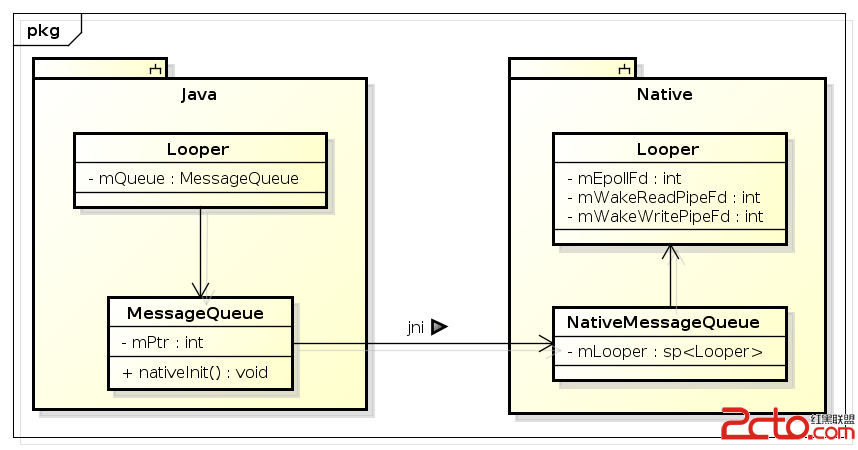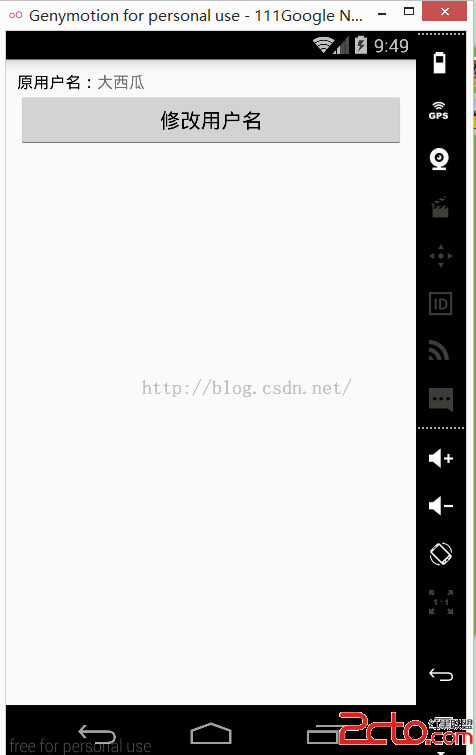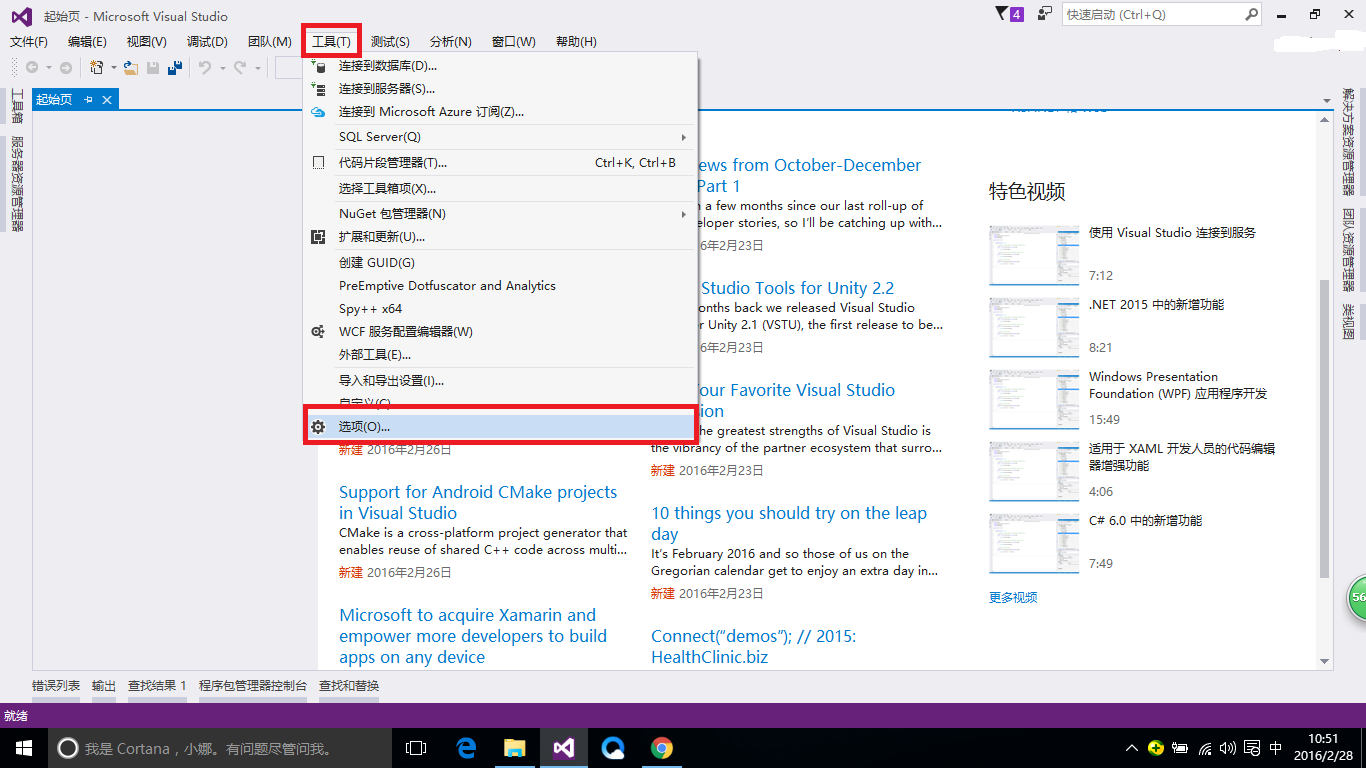編輯:關於android開發
Android Interface Definition Language (AIDL), Android接口定義語言。系統中的進程之間不能共享內存,因此,需要提供一些機制在不同進程之間進行數據通信Interprocess communication (IPC)。AIDL就是解決這個問題的。
閱讀本文需要了解Service的相關知識
aidl是用Java語法編寫的,後綴為.aidl的文件。
每一個aidl文件必須定義一個接口,在這個接口裡聲明方法 在aidl裡不能有static屬性(field) aidl支持基本的數據類型,當你需要使用額外的數據類型時需要把它們import進來,即使它們跟這個文件在同一個包中。
// IRemoteService.aidl
package com.example.android;
// Declare any non-default types here with import statements
/** Example service interface */
interface IRemoteService {
/** Request the process ID of this service, to do evil things with it. */
int getPid();
/** Demonstrates some basic types that you can use as parameters
* and return values in AIDL.
*/
void basicTypes(int anInt, long aLong, boolean aBoolean, float aFloat,
double aDouble, String aString);
}
把aidl文件存在src/目錄下,當你build項目的時候,SDK工具會在gen/目錄下生成一個與.aidl文件名字相同的.java文件。
生成的IRemoteService.java如下
public interface IRemoteService extends android.os.IInterface
{
/** Local-side IPC implementation stub class. */
public static abstract class Stub extends android.os.Binder implements com.spark.meizi.IRemoteService
{
private static final java.lang.String DESCRIPTOR = "com.spark.meizi.IRemoteService";
/** Construct the stub at attach it to the interface. */
public Stub()
{
this.attachInterface(this, DESCRIPTOR);
}
/**
* Cast an IBinder object into an com.spark.meizi.IRemoteService interface,
* generating a proxy if needed.
*/
public static com.spark.meizi.IRemoteService asInterface(android.os.IBinder obj)
{
if ((obj==null)) {
return null;
}
android.os.IInterface iin = obj.queryLocalInterface(DESCRIPTOR);
if (((iin!=null)&&(iin instanceof com.spark.meizi.IRemoteService))) {
return ((com.spark.meizi.IRemoteService)iin);
}
return new com.spark.meizi.IRemoteService.Stub.Proxy(obj);
}
@Override public android.os.IBinder asBinder()
{
return this;
}
@Override public boolean onTransact(int code, android.os.Parcel data, android.os.Parcel reply, int flags) throws android.os.RemoteException
{
switch (code)
{
case INTERFACE_TRANSACTION:
{
reply.writeString(DESCRIPTOR);
return true;
}
case TRANSACTION_basicTypes:
{
data.enforceInterface(DESCRIPTOR);
int _arg0;
_arg0 = data.readInt();
long _arg1;
_arg1 = data.readLong();
boolean _arg2;
_arg2 = (0!=data.readInt());
float _arg3;
_arg3 = data.readFloat();
double _arg4;
_arg4 = data.readDouble();
java.lang.String _arg5;
_arg5 = data.readString();
this.basicTypes(_arg0, _arg1, _arg2, _arg3, _arg4, _arg5);
reply.writeNoException();
return true;
}
}
return super.onTransact(code, data, reply, flags);
}
private static class Proxy implements com.spark.meizi.IRemoteService
{
private android.os.IBinder mRemote;
Proxy(android.os.IBinder remote)
{
mRemote = remote;
}
@Override public android.os.IBinder asBinder()
{
return mRemote;
}
public java.lang.String getInterfaceDescriptor()
{
return DESCRIPTOR;
}
/**
* Demonstrates some basic types that you can use as parameters
* and return values in AIDL.
*/
@Override public void basicTypes(int anInt, long aLong, boolean aBoolean, float aFloat, double aDouble, java.lang.String aString) throws android.os.RemoteException
{
android.os.Parcel _data = android.os.Parcel.obtain();
android.os.Parcel _reply = android.os.Parcel.obtain();
try {
_data.writeInterfaceToken(DESCRIPTOR);
_data.writeInt(anInt);
_data.writeLong(aLong);
_data.writeInt(((aBoolean)?(1):(0)));
_data.writeFloat(aFloat);
_data.writeDouble(aDouble);
_data.writeString(aString);
mRemote.transact(Stub.TRANSACTION_basicTypes, _data, _reply, 0);
_reply.readException();
}
finally {
_reply.recycle();
_data.recycle();
}
}
}
static final int TRANSACTION_basicTypes = (android.os.IBinder.FIRST_CALL_TRANSACTION + 0);
}
/**
* Demonstrates some basic types that you can use as parameters
* and return values in AIDL.
*/
public void basicTypes(int anInt, long aLong, boolean aBoolean, float aFloat, double aDouble, java.lang.String aString) throws android.os.RemoteException;
}
在這個文件中有一個內部類Stub,這是父接口的一個抽象實現,並聲明了aidl中的所有方法。為了實現由aidl生成的接口,我們需要繼承Stub並實現從aidl繼承過來的方法。下面是一個使用匿名類的例子
private final IRemoteService.Stub mBinder = new IRemoteService.Stub() {
public int getPid(){
return Process.myPid();
}
public void basicTypes(int anInt, long aLong, boolean aBoolean,
float aFloat, double aDouble, String aString) {
// Does nothing
}
};
這樣mBinder就是一個Stub的實例了,下一步就是如何在client端使用,與service端產生交互了。
注:
當你已經實現你的Service之後,你需把它暴露在Client中使Client可以綁定它。繼承Service並實現onBind()方法,來返回一個實現了Stub的實例。下面就是一個把IRemoteService暴露給Client的例子:
public class RemoteService extends Service {
@Override
public void onCreate() {
super.onCreate();
}
@Override
public IBinder onBind(Intent intent) {
// Return the interface
return mBinder;
}
private final IRemoteService.Stub mBinder = new IRemoteService.Stub() {
public int getPid(){
return Process.myPid();
}
public void basicTypes(int anInt, long aLong, boolean aBoolean,
float aFloat, double aDouble, String aString) {
// Does nothing
}
};
}
現在client(比如是一個Activity)可以調用bindService()來連接這個Service,通過onServiceConnected()來接收Service中 onBind() 返回的mBinder,最後使用YourServiceInterface.Stub.asInterface(service)來把返回的mBinder轉換成YourServiceInterface類型。例子如下:
IRemoteService mIRemoteService;
private ServiceConnection mConnection = new ServiceConnection() {
// Called when the connection with the service is established
public void onServiceConnected(ComponentName className, IBinder service) {
// Following the example above for an AIDL interface,
// this gets an instance of the IRemoteInterface, which we can use to call on the service
mIRemoteService = IRemoteService.Stub.asInterface(service);
}
// Called when the connection with the service disconnects unexpectedly
public void onServiceDisconnected(ComponentName className) {
Log.e(TAG, "Service has unexpectedly disconnected");
mIRemoteService = null;
}
};
注:
如果Service和Client在兩個不同的Application中,Client的Application的src/目錄下必須也有對應的.aidl文件。
public static class Binding extends Activity {
/** The primary interface we will be calling on the service. */
IRemoteService mService = null;
/** Another interface we use on the service. */
ISecondary mSecondaryService = null;
Button mKillButton;
TextView mCallbackText;
private boolean mIsBound;
/**
* Standard initialization of this activity. Set up the UI, then wait
* for the user to poke it before doing anything.
*/
@Override
protected void onCreate(Bundle savedInstanceState) {
super.onCreate(savedInstanceState);
setContentView(R.layout.remote_service_binding);
// Watch for button clicks.
Button button = (Button)findViewById(R.id.bind);
button.setOnClickListener(mBindListener);
button = (Button)findViewById(R.id.unbind);
button.setOnClickListener(mUnbindListener);
mKillButton = (Button)findViewById(R.id.kill);
mKillButton.setOnClickListener(mKillListener);
mKillButton.setEnabled(false);
mCallbackText = (TextView)findViewById(R.id.callback);
mCallbackText.setText("Not attached.");
}
/**
* Class for interacting with the main interface of the service.
*/
private ServiceConnection mConnection = new ServiceConnection() {
public void onServiceConnected(ComponentName className,
IBinder service) {
// This is called when the connection with the service has been
// established, giving us the service object we can use to
// interact with the service. We are communicating with our
// service through an IDL interface, so get a client-side
// representation of that from the raw service object.
mService = IRemoteService.Stub.asInterface(service);
mKillButton.setEnabled(true);
mCallbackText.setText("Attached.");
// We want to monitor the service for as long as we are
// connected to it.
try {
mService.registerCallback(mCallback);
} catch (RemoteException e) {
// In this case the service has crashed before we could even
// do anything with it; we can count on soon being
// disconnected (and then reconnected if it can be restarted)
// so there is no need to do anything here.
}
// As part of the sample, tell the user what happened.
Toast.makeText(Binding.this, R.string.remote_service_connected,
Toast.LENGTH_SHORT).show();
}
public void onServiceDisconnected(ComponentName className) {
// This is called when the connection with the service has been
// unexpectedly disconnected -- that is, its process crashed.
mService = null;
mKillButton.setEnabled(false);
mCallbackText.setText("Disconnected.");
// As part of the sample, tell the user what happened.
Toast.makeText(Binding.this, R.string.remote_service_disconnected,
Toast.LENGTH_SHORT).show();
}
};
/**
* Class for interacting with the secondary interface of the service.
*/
private ServiceConnection mSecondaryConnection = new ServiceConnection() {
public void onServiceConnected(ComponentName className,
IBinder service) {
// Connecting to a secondary interface is the same as any
// other interface.
mSecondaryService = ISecondary.Stub.asInterface(service);
mKillButton.setEnabled(true);
}
public void onServiceDisconnected(ComponentName className) {
mSecondaryService = null;
mKillButton.setEnabled(false);
}
};
private OnClickListener mBindListener = new OnClickListener() {
public void onClick(View v) {
// Establish a couple connections with the service, binding
// by interface names. This allows other applications to be
// installed that replace the remote service by implementing
// the same interface.
Intent intent = new Intent(Binding.this, RemoteService.class);
intent.setAction(IRemoteService.class.getName());
bindService(intent, mConnection, Context.BIND_AUTO_CREATE);
intent.setAction(ISecondary.class.getName());
bindService(intent, mSecondaryConnection, Context.BIND_AUTO_CREATE);
mIsBound = true;
mCallbackText.setText("Binding.");
}
};
private OnClickListener mUnbindListener = new OnClickListener() {
public void onClick(View v) {
if (mIsBound) {
// If we have received the service, and hence registered with
// it, then now is the time to unregister.
if (mService != null) {
try {
mService.unregisterCallback(mCallback);
} catch (RemoteException e) {
// There is nothing special we need to do if the service
// has crashed.
}
}
// Detach our existing connection.
unbindService(mConnection);
unbindService(mSecondaryConnection);
mKillButton.setEnabled(false);
mIsBound = false;
mCallbackText.setText("Unbinding.");
}
}
};
private OnClickListener mKillListener = new OnClickListener() {
public void onClick(View v) {
// To kill the process hosting our service, we need to know its
// PID. Conveniently our service has a call that will return
// to us that information.
if (mSecondaryService != null) {
try {
int pid = mSecondaryService.getPid();
// Note that, though this API allows us to request to
// kill any process based on its PID, the kernel will
// still impose standard restrictions on which PIDs you
// are actually able to kill. Typically this means only
// the process running your application and any additional
// processes created by that app as shown here; packages
// sharing a common UID will also be able to kill each
// other's processes.
Process.killProcess(pid);
mCallbackText.setText("Killed service process.");
} catch (RemoteException ex) {
// Recover gracefully from the process hosting the
// server dying.
// Just for purposes of the sample, put up a notification.
Toast.makeText(Binding.this,
R.string.remote_call_failed,
Toast.LENGTH_SHORT).show();
}
}
}
};
// ----------------------------------------------------------------------
// Code showing how to deal with callbacks.
// ----------------------------------------------------------------------
/**
* This implementation is used to receive callbacks from the remote
* service.
*/
private IRemoteServiceCallback mCallback = new IRemoteServiceCallback.Stub() {
/**
* This is called by the remote service regularly to tell us about
* new values. Note that IPC calls are dispatched through a thread
* pool running in each process, so the code executing here will
* NOT be running in our main thread like most other things -- so,
* to update the UI, we need to use a Handler to hop over there.
*/
public void valueChanged(int value) {
mHandler.sendMessage(mHandler.obtainMessage(BUMP_MSG, value, 0));
}
};
private static final int BUMP_MSG = 1;
private Handler mHandler = new Handler() {
@Override public void handleMessage(Message msg) {
switch (msg.what) {
case BUMP_MSG:
mCallbackText.setText("Received from service: " + msg.arg1);
break;
default:
super.handleMessage(msg);
}
}
};
}
 android6.0源碼分析之Camera API2.0下的Capture流程分析,android6.0api2.0
android6.0源碼分析之Camera API2.0下的Capture流程分析,android6.0api2.0
android6.0源碼分析之Camera API2.0下的Capture流程分析,android6.0api2.0前面對Camera2的初始化以及預覽的相關流程進行了詳
 Android消息處理機制(Handler、Looper、MessageQueue與Message)
Android消息處理機制(Handler、Looper、MessageQueue與Message)
Android消息處理機制(Handler、Looper、MessageQueue與Message) Android是消息驅動的,實現消息驅動有幾個要素: 消息的表示
 android 自定義AlertDialog 與Activity相互傳遞數據
android 自定義AlertDialog 與Activity相互傳遞數據
android 自定義AlertDialog 與Activity相互傳遞數據 主要實現功能: 1、從Activity的TextView中獲取字符串設置到AlertDial
 Apache Cordova開發Android應用程序——番外篇,cordovaandroid
Apache Cordova開發Android應用程序——番外篇,cordovaandroid
Apache Cordova開發Android應用程序——番外篇,cordovaandroid 很多天之前就安裝了visual studio community 201